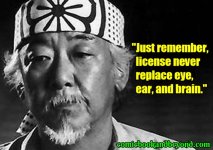rugercharger
Member
hi spyder owners. i have a question riding during down pours with the spyder. my experience has been with my previous "2" wheelers. i had no problem at all riding in torrential downpours on two wheels. so to the experienced spyder travelers how is the "3" wheeler in the rain when it is coming down. i ask this because of the third wheel in the middle which would put it right between the two tracks in the road. any hydro planing? just want to know what to expect.
thanks
thanks

